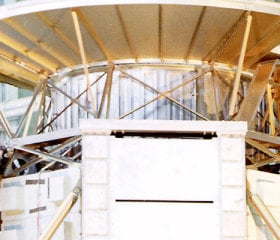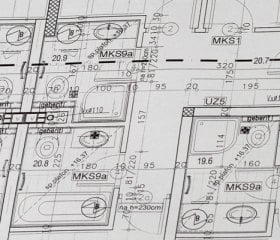
Traffic accidents in the workplace are serious business and require comprehensive investigations.
Often workplace safety is only improved once an accident has taken place, especially with relation to traffic and vehicles. A worker is injured on site, an investigation finds weaknesses in the system, and changes are implemented. But it shouldn’t take a serious accident to serve as a wake-up call.
Every business can and should take a wide range of pre-emptive steps to improve the traffic safety of their worksite.
Site roads and their traffic management arrangements should be designed by qualified personnel (e.g. civil engineers) in accordance with sound design principles.
Traffic signs used for site roads must be in accordance with the appropriate part of Australian Standard AS 1742. Safety signs must be used for:
Speed limits should be imposed throughout the site, as appropriate (e.g. 5 - 20 km per hour). Measures should be in place to ensure adherence to site speed limits (e.g. speed humps, training, instructions, signage and observations of driver performance).
Parking facilities should be designed and constructed in accordance with Australian Standard AS 2890. Parking facilities for persons with disabilities should also be provided, as appropriate.
Marked and sign-posted pedestrian crossings, as well as safety barriers in full accordance with Australian Standard AS 3845, should be located where required.
All site roads, parking areas, pedestrian crossings, and any other areas where vehicles operate, should be appropriately lit and designed to avoid extremes of light variation (i.e. moving from a brightly lit area to a dark one).
Drivers of delivery vehicles (couriers, trucks, tankers, vans, etc.) and visitors, who are permitted to enter the site with their vehicle, should be informed of the site traffic rules, as part of their induction, before they are allowed to enter.
On-site refuelling of vehicles (including on construction and temporary sites) must be carried out only in designated and properly signed stations. Where possible, such areas should be bunded.
Precautions for on-site refuelling and/or fuel transfer, should include, but not be limited to the following:
Fuel-dispensing equipment should be in accordance with Australian Standard AS/NZS 2229.
The arrangements of the following Australian standards should be utilised in the development of specific site procedures, as applicable:
Arrangements should be in place to ensure compliance, in relation to vehicles on site, with regulatory arrangements related to air pollution and noise.
Any vehicle incident on site, whether resulting in injury or not, should be immediately reported and thoroughly investigated.
The information on this site is of a general nature only. It does not take your specific needs or circumstances into consideration. You should look at your own situation and requirements before making any decisions.

3 min read
3 min read
The safety of your workers is paramount. Make sure that your workers are protected from electrical hazards. ...

5 min read
5 min read
Discover the most effective and critical steps in protecting your workplace from hazardous risks....

3 min read
3 min read
How the Australian Standards are used in court proceedings and prosecutions...

2 min read
2 min read
Conduct your next audit with minimum of fuss and maximum efficiency with our useful tips....
26 Park Street
South Melbourne
Melbourne VIC 3026
Australia
P. O. Box 23
Telerah
NSW 2320
Australia
Suite 25 Ground Floor
185-187 High Street
Freemantle
WA 6959
Australia
P.O. Box 306 Black Rock VIC 3193 Australia